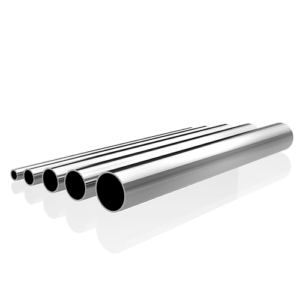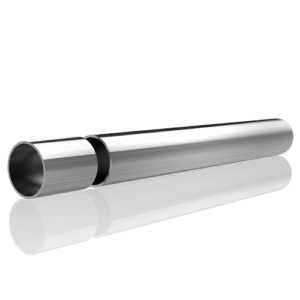Welcome to My Blog!
Before we dive into the content, I’d love for you to join me on my social media platforms where I share more insights, engage with the community, and post updates. Here’s how you can connect with me:
Facebook:https://www.facebook.com/profile.php?id=100090063158454
Now, let’s get started on our journey together. I hope you find the content here insightful, engaging, and valuable.
Introduction

Selecting the appropriate stainless steel tube sizes is crucial for a wide range of applications, from industrial use to home projects. With various sizes and specifications available, understanding the factors that influence your choice can make a significant difference in performance, safety, and cost. This blog will explore the key considerations for choosing the right stainless steel tube sizes, providing a comprehensive guide to help you make informed decisions.
Understanding Stainless Steel Tubes
What Are Stainless Steel Tubes?
Stainless steel tubes are hollow cylindrical structures made from stainless steel, commonly used in plumbing, structural applications, automotive, and various industrial applications. Their resistance to corrosion, strength, and durability make them an ideal choice for many environments.
Types of Stainless Steel Tubes
There are two main types of stainless steel tubes: seamless and welded.
- Seamless Tubes: These are made from solid steel billets, which are heated and pushed through a die to create the desired shape. They are ideal for high-pressure applications due to their uniformity.
- Welded Tubes: These tubes are formed by rolling a flat piece of stainless steel into a cylindrical shape and welding the edges together. They are often more cost-effective and widely available in various sizes.
Key Factors in Choosing Stainless Steel Tube Sizes
Application Requirements
The intended application significantly influences the choice of stainless steel tube sizes. For example:
- Structural Support: Larger diameters and thicker walls are often required for structural applications to bear heavier loads.
- Fluid Transport: For applications involving the transport of liquids or gases, the tube diameter and wall thickness must accommodate the flow rate and pressure requirements.
Pressure Ratings
When choosing stainless steel tube sizes, consider the pressure ratings of the tubes. High-pressure applications require thicker walls and larger diameters to withstand the internal pressure. Understanding the pressure requirements can help you select the right tube sizes to ensure safety and functionality.
Temperature Resistance
Different applications have varying temperature requirements. Stainless steel is known for its excellent heat resistance, but the specific grade of stainless steel may affect how well it performs under extreme temperatures. Ensure that the chosen tube sizes can handle the temperature ranges of your application.
Environmental Conditions
The environment where the stainless steel tubes will be used is another critical factor. For example, corrosive environments may require specific grades of stainless steel, while outdoor applications might necessitate tubes that can withstand UV exposure. Consider the following:
- Corrosive Environments: Grades like 316L offer superior resistance to corrosion.
- High-Temperature Environments: Tubes made from heat-resistant grades can prevent deformation.
Fabrication and Installation
Consideration of how the stainless steel tubes will be fabricated and installed is crucial. Some sizes may be more challenging to work with due to their weight or diameter. Additionally, the availability of fittings and connectors that match your chosen sizes can impact installation ease.
Industry Standards and Regulations
Many industries have specific standards and regulations governing the use of stainless steel tubes. Familiarize yourself with these requirements to ensure compliance. For example, the ASTM A312 standard outlines specifications for seamless and welded austenitic stainless steel pipes, which might dictate the sizes you can use.
A Guide to Common Stainless Steel Tube Sizes
To help you understand the available options, here’s a table detailing standard stainless steel tube sizes, including diameter and wall thickness:
| Tube Diameter (inches) | Wall Thickness (inches) | Application Example |
|---|---|---|
| 1/2 | 0.065 | Plumbing |
| 3/4 | 0.065 | HVAC Systems |
| 1 | 0.083 | Structural Support |
| 1 1/4 | 0.095 | Food Processing |
| 1 1/2 | 0.120 | Automotive Exhaust Systems |
| 2 | 0.145 | Chemical Processing |
| 2 1/2 | 0.203 | Heavy-Duty Structural |
Sizing Considerations for Specific Applications
Plumbing Applications
For plumbing, tube sizes typically range from 1/2 inch to 2 inches in diameter. Consider wall thickness based on the water pressure requirements and the environment.
Industrial Applications
In industrial settings, larger tube sizes are often needed to transport materials or fluids. Sizes of 2 inches and above with thicker walls may be necessary for durability and safety.
Automotive Applications
Automotive systems, particularly exhaust systems, require stainless steel tubes that can withstand high temperatures and corrosive gases. Tube sizes generally range from 1.5 inches to 3 inches in diameter.
Tips for Choosing the Right Stainless Steel Tube Sizes

Consult with Experts
When in doubt, consult with engineers or industry experts. They can provide insights based on experience and help you choose the best sizes for your specific needs.
Prototype and Test
If possible, prototype with different stainless steel tube sizes to assess performance before committing to a large purchase. This approach allows for adjustments based on real-world conditions.
Consider Future Needs
Think about potential future applications or expansions. Choosing a slightly larger tube size may save you from having to replace tubes down the line.
Conclusion
Selecting the right stainless steel tube sizes is a critical step in ensuring the success of your project, whether it’s for plumbing, industrial, or automotive applications. By considering factors such as application requirements, pressure ratings, environmental conditions, and industry standards, you can make informed decisions that enhance performance and safety.
With the right knowledge and preparation, you can confidently choose the appropriate stainless steel tube sizes that meet your specific needs.
FAQ
What are the most common stainless steel grades used for tubes?
The most common grades are 304 and 316 stainless steel, with 316 offering better corrosion resistance, especially in harsh environments.
How do I measure stainless steel tube sizes accurately?
Use calipers to measure the outside diameter and a micrometer for wall thickness. Ensure you measure at multiple points to confirm consistency.
Can I use different tube sizes in the same system?
Yes, but ensure that transitions between sizes are done correctly using appropriate fittings to maintain pressure and flow.
What is the difference between welded and seamless tubes?
Seamless tubes are formed from a solid piece of metal and have no welds, while welded tubes are formed by welding together flat pieces of stainless steel. Seamless tubes are generally stronger and more suitable for high-pressure applications.
Are there specific tools for cutting stainless steel tubes?
Yes, tools like pipe cutters, band saws, and chop saws with appropriate blades can be used to cut stainless steel tubes effectively.
